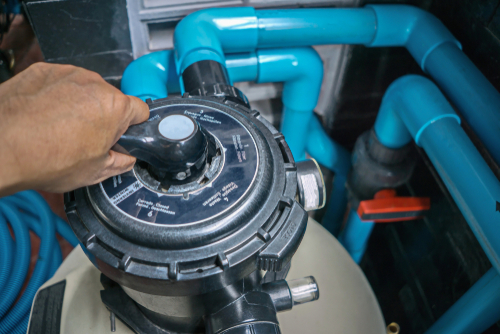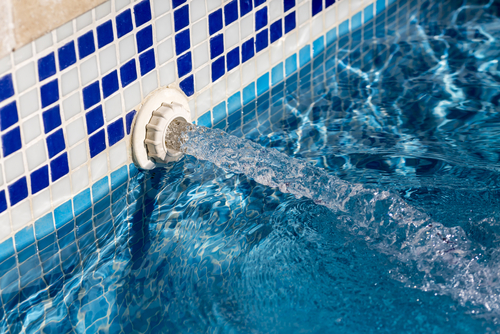
Like many mechanical pieces of equipment, your pool pump motor isn’t meant to last forever. If you keep having problems with your pump, such as it slows and stops without warning or it’s making a strange sound, it might be time to replace it. This can be a challenging task for some pool owners, so you might want to hire a professional to help you get the job done. Typically, you can replace your motor for just $25 to $200 or more if you hire a professional. If you feel confident that you know your way around your pool pump, learn how to properly replace the motor with just eight steps.
Step 1: Finding a Replacement
Before we get to work, make sure you have the correct replacement for your pool pump motor. You should find the make and model of your old pool pump motor, so you can order the same one online.
Step 2: Turn Off the Power to the Pool Pump
Step 3: Removing the Old Pump
Remove the bonding lug and wire on your old pool pump. Next, use a wrench to remove the bolts keeping your pump in place. Finally, slide the pump out of the holder and rest it on a padded surface on the ground.

Step 4: Taking Out the Old Motor
Start
by removing the electrical plate protecting the old motor. You should see three
wires connected to the motor inside the pump, including one black, one green
and one red. You’ll need to disconnect those wires to proceed. Unscrew the
conduit collar and pull the wires through the metal opening. You should now be
able to pull the motor up and out of the pump.
Step 5: Removing
the Diffuser, Impeller and Motor Plates
You can pull the diffuser off the bottom of the motor to see the impeller ring below. Twist off the impeller ring and unscrew the capacitor to reach the motor shaft underneath. You’ll need to remove the bolts at the bottom of the motor plate to remove the shaft. Disconnect the motor plate from the shaft.
Step 6: Prepping the New Motor
Just like you did with the old motor, you’ll want to remove the capacitor to get access to the motor shaft. Mount the new motor to the mounting plate you used with the old motor. Make sure the new motor is seated correctly on the plate. You should see the free end labeled “TOP.” Insert the old impeller into the new motor and replace the capacitor. Finally, snap the diffuser back onto the new motor. To make sure the new motor runs properly, lubricate the diffuser gasket with a touch of silicone lubricant.
Step 7: Installing the New Motor
You’re now ready to insert the new motor into the pool pump. Make sure you can still reach the three wires we disconnected before. If not, pull them through the small metal opening. Once the new motor is safely inside the pump, connect the three wires to the new motor’s electrical housing.

If the new motor has different electrical components and you’re not sure how they connect to the original green, red and black wires, consult the owner’s manual for more information.
Make sure the surface of the new motor is clean before sealing inside the pump. Now, screw the conduit collar back onto the pump and cover the motor with the electrical plate.
Step 8: Reinstalling the Pump
It’s time to put the pump back inside the housing mechanism. You’ll need to reattach the bolts that hold the pump in place. Move around from bolt to bolt, so you don’t accidentally force the pump into the wrong position. It should be seated perfectly flush on the housing mechanism. Now, reattach the bonding wire and lug to the pump like it was before.
That’s it. You’ve just replaced your old pool pump motor. Turn the power back on to make sure the new motor is running smoothly. If the motor isn’t running, you might need to check the electrical connections, but make sure to turn the power back off first.
Pool pump motor replacement doesn’t have to be a headache. If you know how to get in and out of your pump without too much trouble, you should be able to replace the motor in less than an hour. Remember to be safe when replacing the motor and always talk to a professional if you’re not sure what you’re doing. You could electrocute yourself or short-circuit your equipment if you’re not careful, so always proceed with caution.
 Hello Guest,
Hello Guest,  158 item(s)
158 item(s)
